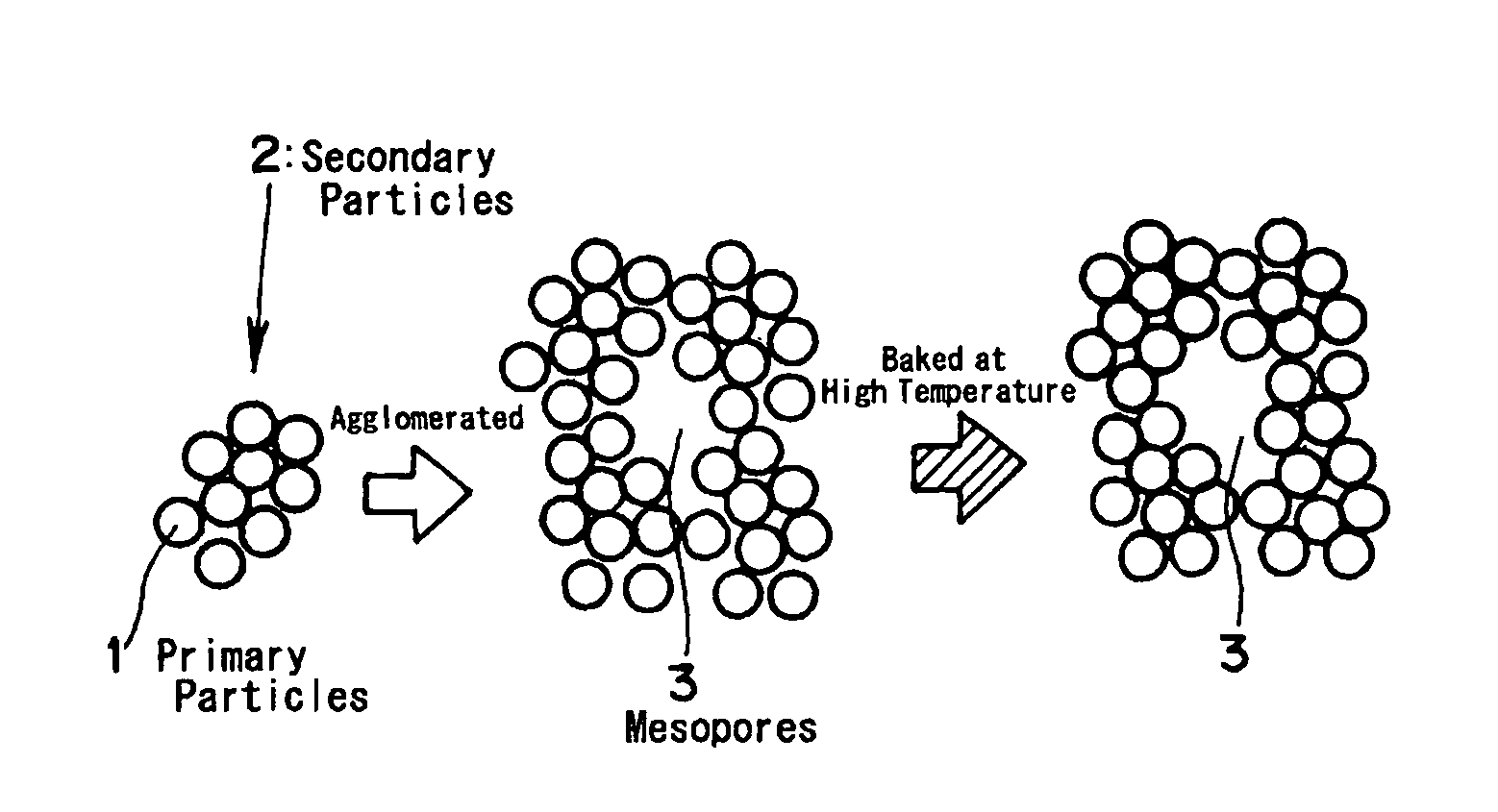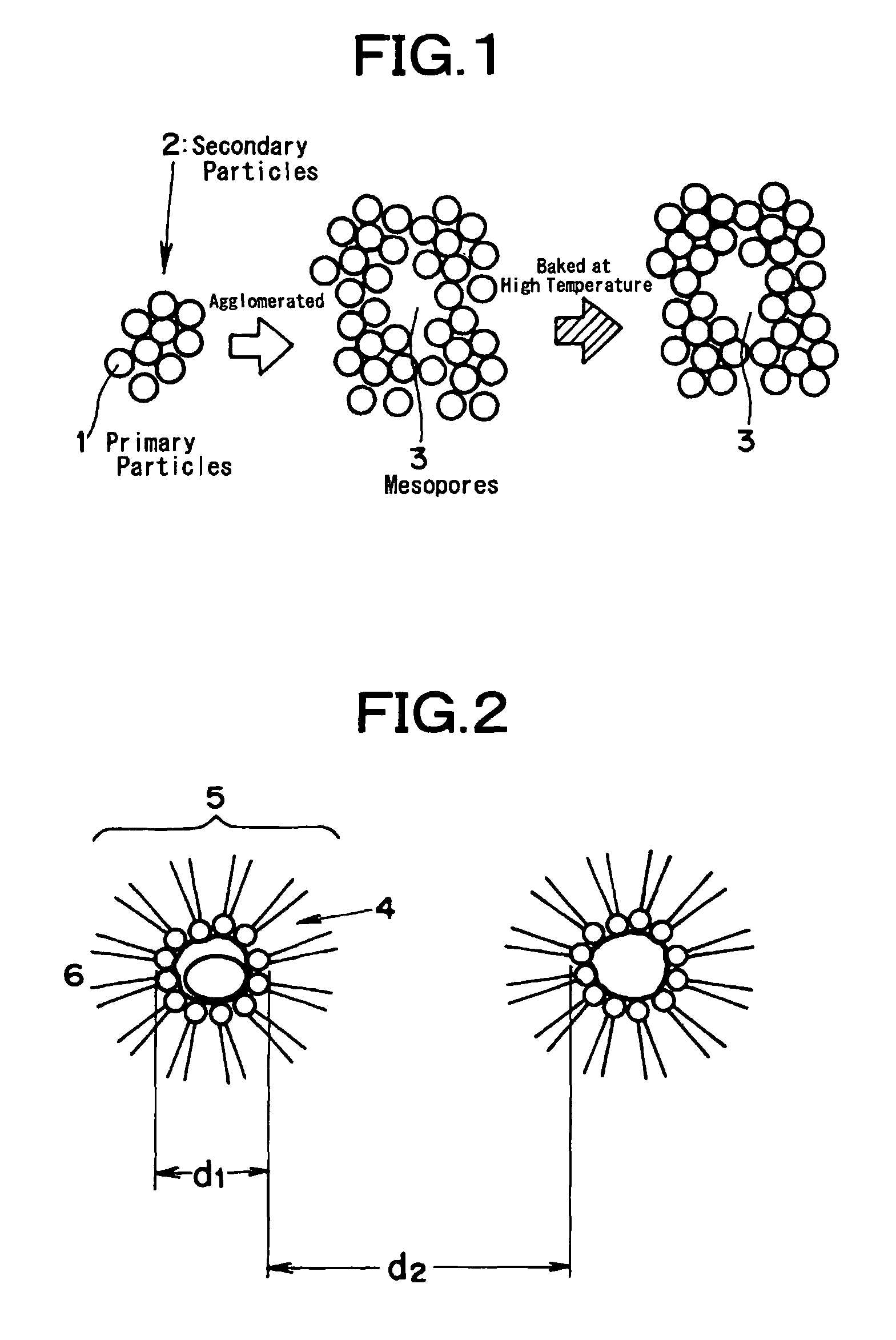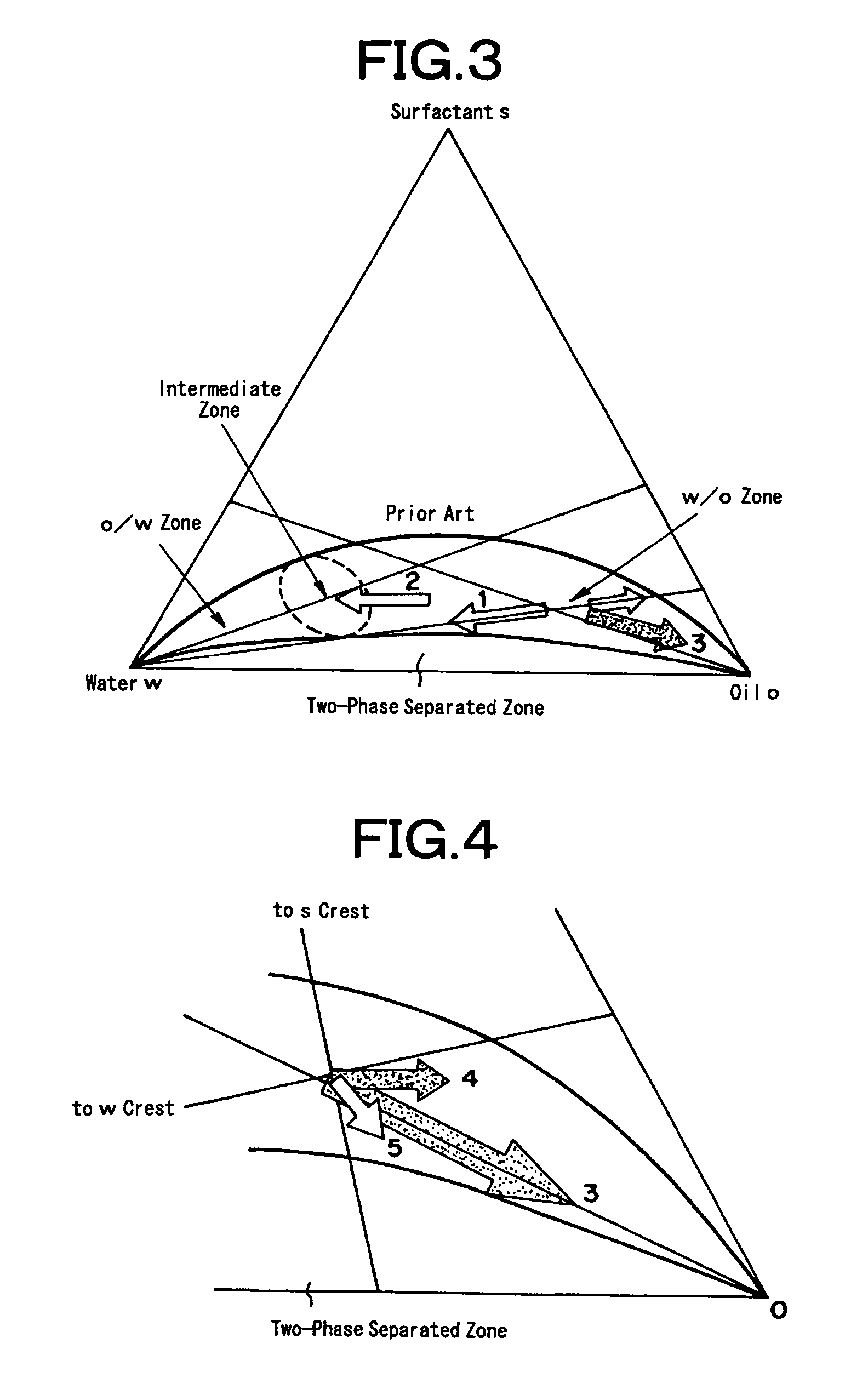Method for producing porous substances
a technology of porous substances and pore particles, which is applied in the direction of metal/metal-oxide/metal-hydroxide catalysts, ceramicware, physical/chemical process catalysts, etc., can solve the problems of affecting the formation of secondary particles, the pore diameter and distribution of pore particles is not large enough, and the method cannot make the separation in a state carrying precious metal particles having a catalytic activation, etc., to achieve excellent high-temperature stability or heat-resistant porous structur
- Summary
- Abstract
- Description
- Claims
- Application Information
AI Technical Summary
Benefits of technology
Problems solved by technology
Method used
Image
Examples
example 1
[0074]3.0 liters of cyclohexane and 224 g of polyoxyethylene (n=5) nonyl phenyl ether were introduced into a beaker having a content volume of 5 liters, and an aqueous solution of 52 g of cerium nitrate and 120 milliliters of distilled water was added and stirred. The solution was stirred at the room temperature by a magnetic stirrer to form inverse micelles (i.e., water in oil type microemulsion having a measured water droplet diameter of 30 nm). Separately of this, 0.23 mols of zirconium butoxide were dissolved in 0.8 liters of cyclohexane to prepare a zirconium alkoxide solution, and this solution was added the aforementioned microemulsion. The volume ratio (O / w) at this time of water (or water phase) to the cyclohexane (or organic phase) was 18. Instantly as this mixture was sufficiently stirred at the room temperature, the content of the beaker turned cloudy into a whitish yellow color to form colloidal particles (or secondary particles having a diameter of about 20 nm).
[0075]N...
example 2
[0076]3.0 liters of cyclohexane and 224 g of polyoxyethylene (n=5) nonyl phenyl ether were introduced into a beaker having a content volume of 5 liters, and an aqueous solution of 52 g of cerium nitrate, 48.5 g of zirconium nitrate and 120 milliliters of distilled water was added and stirred. The solution was stirred at the room temperature by a magnetic stirrer to form microemulsion. Next, ammonia water was introduced into the microemulsion to adjust the pH to 7, and the stirring operation was continued to form colloidal particles. Subsequently, the pH was adjusted to 8.5, and distilled water was added to establish a two-phase separated state. The stirring operation was continued for about 1 hour to age the secondary particles. The precipitate obtained is treated as in Example 1 to form a porous composite oxide (Ce0.4Zr0.6Ox) containing cerium and zirconium.
example 3
[0077]The cerium-zirconium porous composite oxide (Ce0.4Zr0.6Ox) was formed as in Example 1 excepting that the breakage of the microemulsion was made by adding a substance for suppressing the activation of the surfactant in place of the two-liquid separating operation. Specifically, the pH was adjusted with ammonia water to 8 to form the primary particles by adjusting the agglomeration of colloids and to form the secondary particles by the agglomeration of the primary particles. At the same time, 10 milliliters of ethyl alcohol was added to break the microemulsion. In this state, the stirring operation was further continued for about 1 hour to age the secondary particles. The precipitate was treated as in Example 1 to form the porous composite oxide (Ce0.4Zr0.6Ox) containing cerium and zirconium.
PUM
| Property | Measurement | Unit |
|---|---|---|
| diameter | aaaaa | aaaaa |
| diameter | aaaaa | aaaaa |
| diameter | aaaaa | aaaaa |
Abstract
Description
Claims
Application Information
 Login to View More
Login to View More - R&D
- Intellectual Property
- Life Sciences
- Materials
- Tech Scout
- Unparalleled Data Quality
- Higher Quality Content
- 60% Fewer Hallucinations
Browse by: Latest US Patents, China's latest patents, Technical Efficacy Thesaurus, Application Domain, Technology Topic, Popular Technical Reports.
© 2025 PatSnap. All rights reserved.Legal|Privacy policy|Modern Slavery Act Transparency Statement|Sitemap|About US| Contact US: help@patsnap.com



